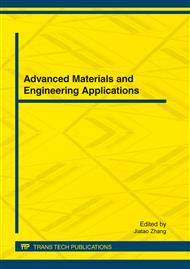p.217
p.224
p.229
p.236
p.242
p.250
p.255
p.260
p.264
Performance Research of Positive Pressure Bio-Protection Suit Polyurethane Antibacterial Composite Fabric
Abstract:
Objective To study performance of positive pressure bio-protection suit fabric composited with polyurethane antibacterial film on double-sided, and to evaluate the feasibility of developing the positive pressure bio-protection suit with the composite fabric. Methods: Testing such performance as physical, protective, decontamination and antibacterial properties of polyurethane antibacterial composite fabric by standard methods. Results: Physical performance and micro-organisms liquid penetration resistance of the composite fabric have reached related standards requirements, while performances have no significant changes after decontamination testing. And its inhibition rates to gram-positive and gram-negative bacteria were so good that could reach 99%. Conclusions: According to testing results, this kind of fabric is suitable for developing positive pressure bio-protection suits by its ideal performance indicators and its upstanding decontamination consumption, antibacterial, flexible and lightweight properties.
Info:
Periodical:
Pages:
242-249
Citation:
Online since:
March 2012
Authors:
Price:
Сopyright:
© 2012 Trans Tech Publications Ltd. All Rights Reserved
Share:
Citation:


